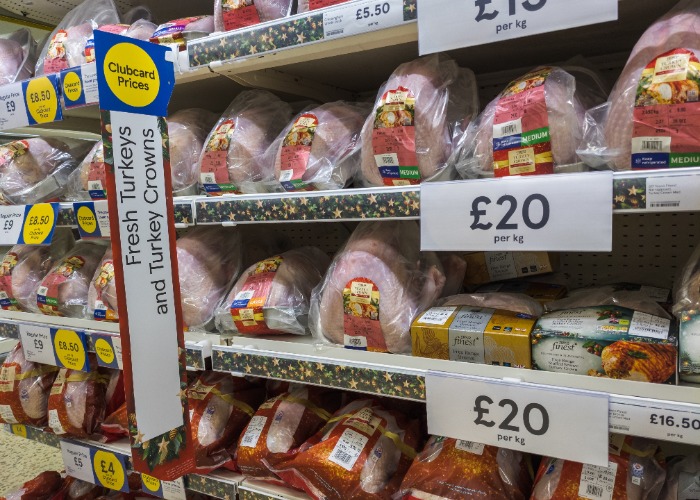
Supermarket will now include unit pricing on items included in Clubcard Prices scheme.
Tesco has confirmed changes to its Clubcard Prices scheme which will make it far more compelling for shoppers.
Tesco was just one of a host of supermarkets to introduce or improve schemes for members of their loyalty programmes, centred around lower prices.
Whereas once being a Clubcard member mainly meant earning points on your spending, it now means qualifying for lower prices on all sorts of qualifying products.
Sainsbury’s did the same with its Nectar Prices scheme, while Co-op and Morrisons have also started rolling out cheaper deals for loyalty members.
It’s been an effective way to retain price-conscious shoppers, who might otherwise have moved to using the likes of Aldi and Lidl, but there has been criticism of Tesco in particular around its failure to include unit prices on items included within these promotions.
This is now being changed, putting shoppers in a better position when it comes to working out which deal really is the best for them and their finances.
Why unit pricing matters
Tesco was criticised for the way it displayed pricing under its Clubcard Pricing scheme last year by the consumer champions at Which?, who suggested that the failure to do so could even be illegal.
Frustratingly, the law here is far from clear, but Which? made the argument that failing to publish unit prices could be construed as a misleading practice under the Consumer Protection from Unfair Trading Regulations 2008 legislation, and therefore break the law.
It suggested that unit pricing should fall under the definition of the ‘material information’ that consumers need in order to make an informed decision.
Separate research by Which? demonstrates precisely why it’s so important to have these details displayed in a clear and understandable fashion.
It tested shoppers on whether they could spot the cheapest deals on fizzy drinks, where unit pricing was not always displayed clearly, with the result that almost three-quarters (72%) were unable to pinpoint the best value deals.
That might not seem like a big deal on individual items; you may only be overspending by a few pennies on those tins of beans, or that multipack of peppers.
But extrapolate that out across an entire shop, and then across a year, and the impact on your finances could be significant.
There have also been concerns that supermarkets are exploiting these loyalty schemes to hike prices elsewhere.
Why isn’t this the norm?
All of which leads us to the question of why unit pricing is not included as standard in all promotions?
It was right for Which? and others to point out the issues that could result from Clubcard Prices and its rival schemes opting against publishing unit prices around stores, since there is clearly a danger of shoppers making poor financial choices.
But that danger would not even be a possibility if supermarkets ‒ and other retailers for that matter ‒ were mandated to show unit prices in all forms of promotion, whatever they might be.
Sure, it might mean a redesign for their snazzy promotional stickers and what-have-you, but if we want to protect consumers that means giving them all the information they need to make an informed decision.
Unit pricing should not be a thing that has to be fought for, or retailers guilted into offering. It should be the norm.
The trouble is that because the legislation around consumer rights is so broad, it’s too easy for retailers to try to handwave these issues away, since they aren’t specifically named within those laws.
We need to ensure that there are no loopholes open which retailers can exploit to leave us in the dark about our spending.
Food prices are still a problem
The cost of our food was a big topic last year, when food price inflation hit levels we haven’t seen since the mid-1970s.
That inflation was running at almost 20% at points in 2023 was little short of extraordinary, and obviously had a huge impact on managing household budgets.
Thankfully food price inflation has dropped significantly since then, with the latest data from the Office for National Statistics (ONS) revealing that it now stands at around 7%.
That’s undoubtedly a welcome improvement, but let’s not pretend that food prices are no longer a problem.
The cost of our food is still rising, at almost double the regular rate of inflation, and it’s not like we are all pocketing the sort of payrises that mean we can swallow such jumps.
Inflation may be falling, but that doesn’t mean prices are, meaning we cannot simply pretend food prices are now easy to manage.